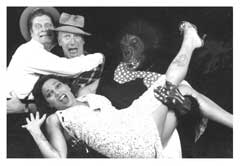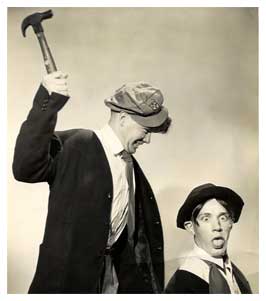
Back before the pornography industry took the wrappings and bow off the old tease and turned sexuality into carnality and corruption for the masses, bawdiness still had some humor attached to it.

Burlesque offered Americans and Brits a thumb-to-the-nose challenge of those highbrow notions of respectability that we now clump together under the term “Victorian”–the wine and cheese elitism that likes religion without blood and romance without kisses. Burlesque started in the 1840s in England among the lower and middle classes, and quickly came to America, pleasing the same demographic group, and particularly the men, those hard-working stiffs who couldn’t afford the opera and theater and ballet (and who wouldn’t care to go even if they could).
It didn’t begin as a bump and grind show, although sex, the kind decent people laugh about, was always a subtext. Burlesque usually meant a show that parodied the social habits and performances of the upper classes. The burlesque show of the 1880s, when the art form was in its maturity, might feature an ensemble performance of interwoven songs and gags, followed by a series of self-contained comedy acts, concluded by a longer musical number (a “burletto”) that would spoof a famous play (Much Ado about the Merchant of Venice or The Mick Hair-Do). Watch an old Busby Berkeley musical like 42nd Street and you get some hint of what the old burlesque shows came to be. Many of the most-beloved comedians of the past century learned their craft through burlesque training – Jackie Gleason, Fanny Brice, Bert Lahr, W.C. Fields, Mae West, Red Skelton, Bob Hope and others.
As for the chorus girls and striptease, yes, that was half the fun, of course, especially in an era of long dresses and dour suffragettes. But the audience laughed and went home to tuck up their children’s covers and kiss them one more time.
